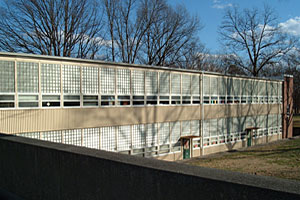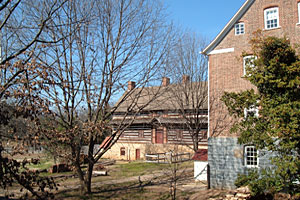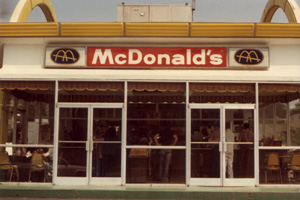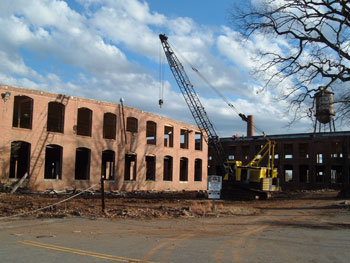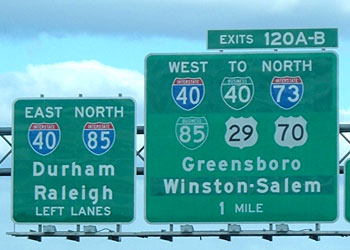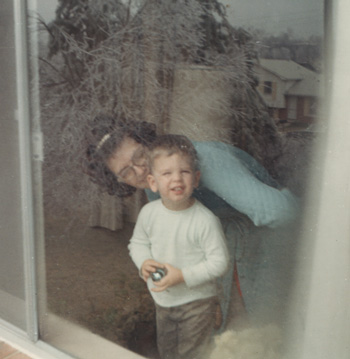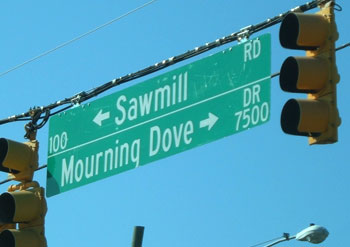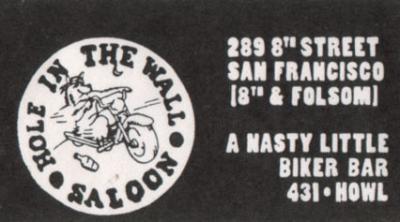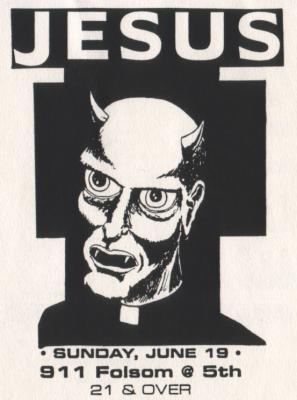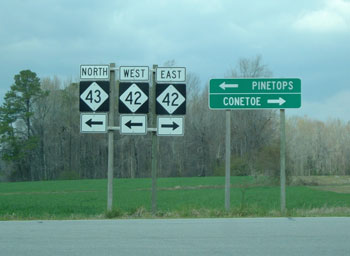(Originally published in the now-defunct Twin City Sentinel.)
They’re going to tear down Moore School on Knollwood Street. Funny thing is no one seems to care, even here in presevation-minded Winston-Salem? How can this be, you ask?
How indeed?
An unfortunate truth in Winston-Salem, just as in most other places, is that “historic presevation” all too often means “preservation of cute buildings that look really old, no matter when they were actually built.” If this school had been built twenty years earlier in some faux Colonial motif, people would be falling all over each other trying to save it. But a unique and significant modernist structure — something with a style that was actually current at the time when it was built, heaven forbid — doesn’t stand a chance.
Evidently, historic preservation looks like this:
But not like this:
You might be interested to discover that there’s a very good chance that the second building in the sequence (a 1950s style McDonald’s on Corporation Parkway, demolished in the 1980s) may actually be older than one of the structures in the first photo.
You see, the first two buildings are from the Old Salem restoration project, a “living history” museum featuring several pre-1850 buildings and probably almost as many reconstructions of pre-1850 buildings. Like Colonial Williamsburg, Old Salem was once an integral part of Winston-Salem, with buildings of varying ages and styles. Many very old structures had been spared the wrecking ball since a large part of the neighborhood was owned by the Moravian Church. However, many of these buildings had been altered over time, and there was also significant infill.
Starting in the 1950s, Old Salem went the “historic district” route, with an appearance commission, restrictive covenants, and more. Very simply, it became a museum, the goal of which was to obliterate any evidence that time had passed. As such, it became impossible to tear anything down in the historic district. Impossible, that its, unless it happened to be a structure built after about 1850. In that case, any building, no matter how architecturally significant, could, and in fact would eventually be destroyed. In addition, any changes made to the exteriors of these buildings were removed, leaving (in many cases) little but new construction based on old pictures and plans.
I call it the “sledgehammer approach” to historic preservation. While the practitioners’ hearts may have been in the right place, this approach has been almost as destructive as the 1960s urban renewal programs were. It’s taken what could have been one of the most interesting neighborhoods in Winston-Salem and turned it into something of a dead zone, trapped in time, with no hope of escape or evolution. Unless you’re a resident (which means you kicked in some serious cash), or on a field trip, or doing research, or showing it to visitors, there’s really no compelling reason to go to Old Salem. It’s very cute and scenic and photogenic, but there’s just not much going on there.
I don’t like historic districts that have been turned into museum exhibits, stripped of any temporal context or change. Most aren’t as severe a case as Old Salem, but once the designation is applied, almost any such district takes on a certain pretentious aura, its residents trying to apply a past most urban neighborhoods never really had in their heyday, with imitation gaslights and decorative street signs, and overpriced paving stones.
And every house must be from the same decade, dammit. Or at least must look the part. By the way, only houses are allowed to begin with.
I now present my own rules for historic preservation, the ones that will take effect when I am declared emperor:
- History did not end at the turn of the last century. Many important things have happened since then, and many of these things happened in equally important buildings that were built since then.
- Neighborhoods and cities change over time. Single-era neighborhoods are generally a trifle boring when all is said and done. To ignore evolution is not to preserve history, but to deny it.
- Buildings change over time as well. The 1950s modern façade that was added to the lower level of the 1920s office building is as much a part of that building’s history as is the original façade, and sometimes more. Additions and modifications should at least be considered for preservation, and not be automatically dismissed.
- Commercial buildings, even small ones that may have contained mundane things like grocery and drug stores, are every bit as worthy of preservation (if not more so) than grand structures that most “common people” never visited when they were new. These “everyday” structures are the ones people remember, and can often tell us much more about life in the past than some mansion on a hill.
- Priority should go to (a) buildings that are unique, (b) buildings that can be rehabilitated for some useful purpose, (c) buildings that have some physical relationship to the time in which they were built, and (d) buildings where something important happened — although my definition of “important” may differ from yours.
